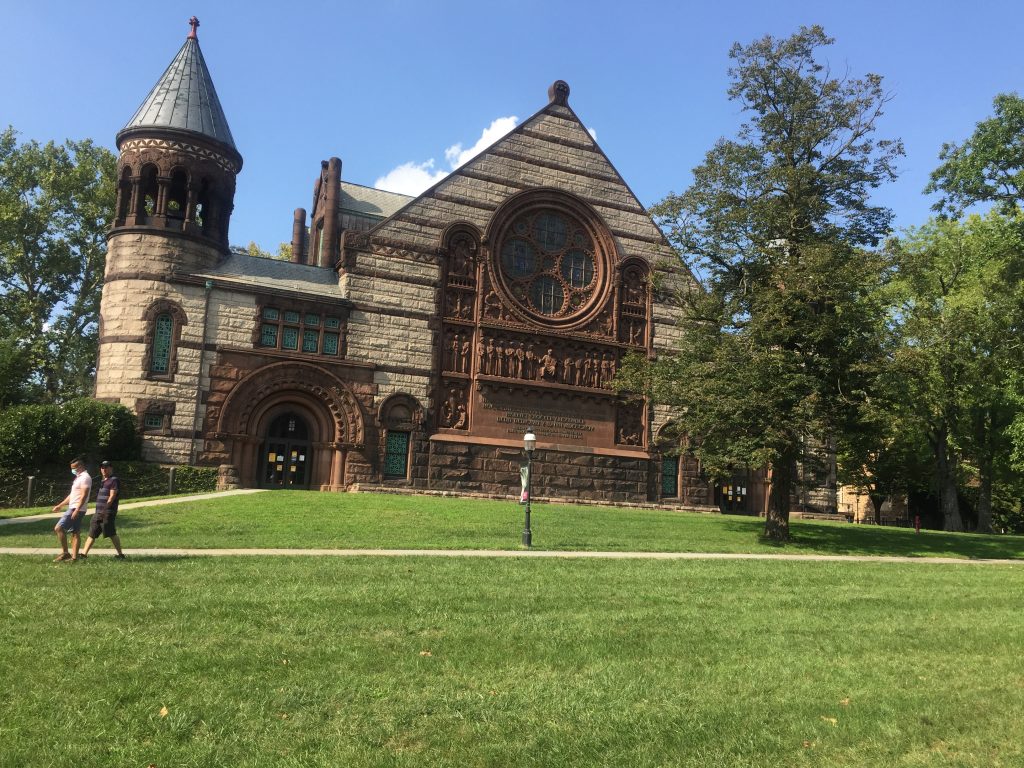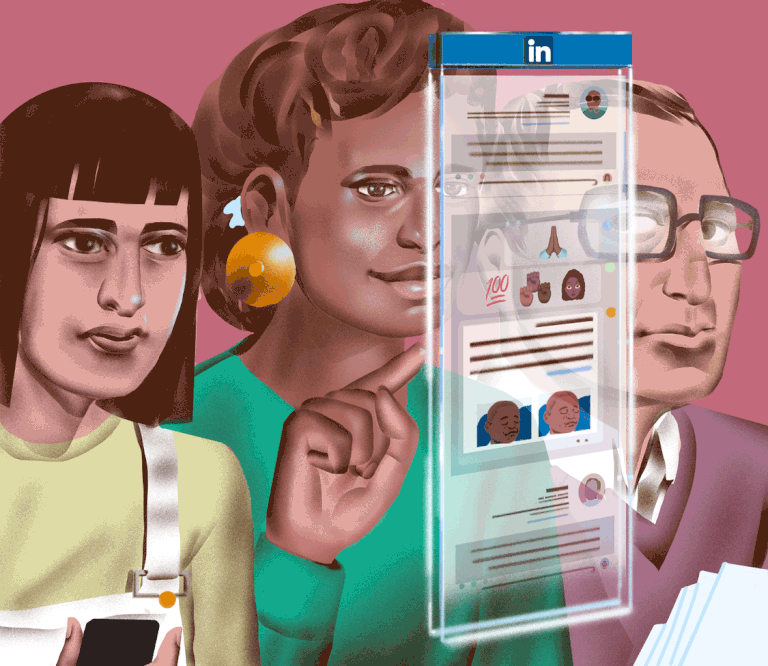Toutes les astuces pour écrire son « resume » et éviter les erreurs de présentation. SUITE
Category Archives: Emploi aux Etats-Unis
US – Education: Policy Changes Benefit STEM Fields
In January, the Biden administration announced new policies aimed at attracting to the U.S. international graduates and professionals who specialize in science, technology, engineering and mathematics (STEM). These changes are part of Biden’s efforts “to strengthen [the U.S.] economy and technological competitiveness.” New initiatives include but are not limited to:
- Expansion of the STEM Optional Practical Training (OPT) program to include 22 new fields of study. The program permits F-1 students earning Bachelor’s, Master’s, and Doctorates in certain STEM fields to remain in the United States for up to 36 months to complete Optional Practical Training after earning their degrees. The newly added fields include:
- Bioenergy; Forestry, General; Forest Resources Production and Management; Human Centered Technology Design; Cloud Computing; Anthrozoology; Climate Science; Earth Systems Science; Economics and Computer Science; Environmental Geosciences; Geobiology; Geography and Environmental Studies; Mathematical Economics; Mathematics and Atmospheric/Oceanic Science; Data Science, General; Data Analytics, General; Business Analytics; Data Visualization; Financial Analytics; Data Analytics, Other; Industrial and Organizational Psychology; Social Sciences, Research Methodology and Quantitative Methods.
On February 7th, The U.S. House of Representatives passed the America COMPETES Act, intended to boost U.S. global competitiveness. The Act contains two major immigration reforms: (1) a new W visa category for startups would be available to foreign entrepreneurs and, (2) a direct path to permanent residence for immigrants who earn a Ph.D. in a STEM field in the U.S.
Please note this is proposed, not final, legislation. While these reforms are compelling, the Bill still needs to pass in the Senate, which is expected to be challenging.
The Rise of the Video Résumé
Despite significant changes in technology and media in our daily lives over the last 20 to 30 years, the humble one- or two-page résumé has remained a remarkably consistent tool in the job application process. You can read more about the history of the résumé here. Tools like LinkedIn have certainly brought the résumé to the digital age, but despite some of its additional media features, most people’s profiles are still based on a text-heavy summary of skills and experiences. MORE

How to land a job with USAID
With a field presence in some 80 countries and programs in a further 20 countries, the U.S. Agency for International Development has approximately 9,000 employees worldwide.

The agency hires for a range of technical, managerial, and operational roles to further U.S. interests overseas while tackling global challenges, such as poverty, disease, and climate change, in low- and middle-income countries. USAID staff work with U.S. and foreign partners to provide assistance in the areas of global health, global stability, humanitarian assistance, innovation and partnerships, and women and girls’ empowerment.
USAID’s workforce is made up of direct-hire and contract employees based in the U.S. and in field missions around the world. Staff fall under three major categories: civil service employees, foreign service officers, and foreign service nationals. MORE
USA – FY2022 H-1B Cap Registration Key Deadlines
- March 9: H-1B registration process opens at Noon, Eastern Time;
- March 25: H-1B registration process closes at Noon, Eastern Time;
- March 31: Date by which USCIS intends to notify selected registrants; and
- April 1: Earliest date that FY2022 H-1B cap subject petitions may be filed.
L’Oréal USA Partners with the NAACP to Launch Its Inclusive Beauty Fund
L’Oréal USA today announced the creation of its Inclusive Beauty Fund, a new grant program presented in partnership with the NAACP, the largest and most pre-eminent civil rights organization in the nation. Through this inaugural round of funding, L’Oréal USA will award 30 one-time grants of $10,000 each to Black-owned small businesses, Black entrepreneurs, and professional services in all sectors of the U.S. beauty industry.

As small businesses in America have been hit the hardest by the economic fallout of the pandemic and Black-owned businesses are shutting down twice as fast as others according to NBER, L’Oréal USA teamed up with the NAACP to identify the most promising Black-owned small businesses and entrepreneurs in the beauty industry that are most in need of investment.
“As the leading beauty company in the United States, we believe that we have a responsibility to invest in the small business owners and entrepreneurs who are the lifeblood of our dynamic beauty industry. We are proud to team up with the NAACP to advance our shared mission of creating a more inclusive and equitable world during this time of great economic vulnerability for so many. We hope the Inclusive Beauty Fund will introduce us to entrepreneurs in the beauty industry that we can build strong relationships with well into the future,” said Angela Guy, Chief Diversity & Inclusion Officer, L’Oréal USA.
In addition to one-time funding, L’Oréal USA is committed to providing grantees with professional mentorship and business development support with the participation of top executives from its leading beauty brands and its professional beauty products distributor, SalonCentric. The Inclusive Beauty Fund is part of L’Oréal USA’s larger commitment to support the NAACP’s mission, which will include additional initiatives to be announced in the future.The initiative is backed by L’Oréal USA’s newly formed Diversity & Inclusion Advisory Board, who will work alongside the NAACP, L’Oréal USA, and SalonCentric leaders to review and select grant recipients. The Advisory Board, made up of up over 20 internal and external stakeholders, have come together to ideate as a collective on efforts to influence and reimagine social and inclusive strategies that support L’Oréal USA’sDiversity and Inclusion mission to build the standard in making beauty inclusive.
“Black-owned small beauty businesses are the heartbeat of their neighborhoods, and beauty business owners are navigating tremendous challenges stemming from the Covid-19 and recent events. The NAACP is proud to partner with L’Oréal USA to help support these entrepreneurs and ensure the longevity of the services and community their businesses provide,” said Yumeka Rushing, Chief Strategy Officer, NAACP.
How to Apply
Applications for the Inclusive Beauty Fund will be administered by the NAACP in partnership with Hello Alice, a platform for small business owners to identify the right path to start and grow their company. Applications for the financial grants opens today January 29, and proceeds through February 18, 2021. All submissions must be conducted through Hello Alice: https://hialice.co/LOreal-HelloAlice-Grant. The candidates selected to receive the grants will be announced in April of 2021.
Grants are available to new or existing beauty businesses of all kinds, including but not limited to salons, spas, barber shops, stylists, makeup artists, entrepreneurs, startup founders, haircare specialists, and beauty schools. MORE
USA – Want to Be a Lawyer? You May Have to Take on More Than $150,000 in Debt
Working as a lawyer can be a rewarding — though stressful — career. Getting there is pretty tough, too. Law school is so rigorous that until 2014, the American Bar Association restricted the number of hours students were allowed to work while in school.
Law school is also expensive. Data published by the National Center for Education Statistics showed that in 2016, seven out of 10 law students had to take on loans to pay for their schooling. The average student loan balance for graduates then was $145,500 — a number that has continued to grow, according to more recent surveys.
If you’re going to take on so much debt, you want to be confident you’ll be able to get a job using your new law degree. Law School Transparency (LST), a non-profit that educates consumers about the legal profession, reports that over 60% of law students get a job offer before they even graduate.
Still, the Bureau of Labor Statistics states that job competition will be fierce over the next decade since there are more students graduating than jobs available in the field. That’s why borrowing thousands of dollars worth of student loans isn’t a decision you should make lightly.
Here’s what you should know about law school and student debt.
How Much Law School Costs
The cost of law school has been exceeding inflation for three decades straight, according to Law School Transparency’s latest data.
Law school is expensive for the same reason a lot of college programs are: it requires a lot of highly educated (and expensive) people to deliver its courses.
Ashley Norwood-Struppa, northeast regional manager at the AccessLex Center for Education and Financial Capability, says that law schools also invest a lot of money on resources to help students with career placement. That includes intensive practice clinics and networking events for exposure.
It’s expensive to provide those experiences for students, and that’s one of the reasons why law schools have such high tuition rates, says Jeff Thomas, executive director of legal programs at Kaplan, a company that offers test preparation services for college students.
Law schools also compete for prestige by trying to lure the best students to increase their median Law School Admission Test (LSAT) scores. That, in turn, allows them to boost their reputation and position themselves at a higher rank. To do this, they offer lofty scholarships to those with the highest GPAs and LSAT scores, which also comes at a cost.
“If you’re throwing a ton of scholarship awards at your very top students, you’ve got to be charging a lot to your other students to be able to cover the cost of those,” Thomas says.
So, how much does it cost to attend law school? Here’s the average cost of tuition and fees by type of institution and residency status, as reported by Law School Transparency:
- Resident students at public schools: $28,186
- Nonresident students at public schools: $41,628
- Resident and nonresident students at private schools: $49,312
How Much You’ll Need to Borrow for Law School
In a recent survey by ABA’s Young Lawyers Division, more than 95% of respondents said they took out loans to pay for their degree. The average loan balance of a law school graduate is almost $165,000, and only a small fraction of that debt is from undergraduate education.
Norwood-Struppa, from AccessLex Institute, says that one of the reasons law students borrow more than those pursuing other graduate degrees is that there aren’t as many scholarships available as there are for other programs. In fact, the number of law schools offering merit-based scholarships has decreased by over 30% over the last decade, according to data from Law School Transparency.
Still, how much you’ll need to borrow will depend on a few factors, including the type of institution you attend, and how prestigious it is.
Law students who attend a public school in-state borrow significantly less than those attending private institutions. The average balance of a public school graduate is $93,436 vs $133,384 for private schools.
In terms of prestige, you’ll typically pay more if you attend a top tier school. The most competitive and well-known law schools will cost roughly $65,000 a year in tuition alone. A tier three school, on the other hand, can cost about $48,000.
Types of Loans You Can Get in Law School
As a law student, you’ll be able to apply for three types of loans: federal loans, institutional loans, and private loans.
Federal student loans should be the first option you explore since they offer lower fixed rates than private loans and flexible repayment options.
Law students are eligible for two types of federal loans: Direct Unsubsidized loans and Grad PLUS loans. To apply for any of these, first, you’ll need to fill out the Free Application for Federal Student Aid (FAFSA).
Direct Unsubsidized loans have an annual borrowing limit of $20,500 for law students. They currently have a fixed interest rate of 4.30% and you don’t need to pass a credit check to be approved for the loan.
Grad PLUS loans can be taken out for the full cost of attendance but do require you to pass a simple credit check for approval. Grad PLUS loans currently have a fixed interest rate of 5.30%.
Institutional loans are issued by the schools. These are typically available to students once they’ve exhausted all other sources of financial aid, including federal loans. Requirements, borrowing limits, and conditions are set by each school, but interest rates tend to be lower than those of private loans, and repayment is more flexible.
Finally, there’s private loans. In most cases, these can be taken out for the full cost of attendance. They can have fixed or variable interest rates, ranging from 1.25% to over 15%. However, to qualify and secure the lowest rates, you must have a stable source of income and excellent credit or have a co-signer that meets these criteria.
Tips to Minimize Debt in Law School
Finishing law school without any debt may be hard to achieve, but there are some things you can do to reduce the amount you borrow.
Norwood-Struppa, from AccessLex Institute, says that when comparing schools, it’s more important to look at the resources and discounts available than the full sticker price. Law School Transparency reported that for the 2018-19 academic year, only 25% of law students paid full price for tuition and fees.
As previously mentioned, law schools tend to offer merit-based aid for students with high GPAs and LSAT scores. That’s why Christopher Brown, chair of the ABA’s Young Lawyers Division, recommends doing everything possible to get the highest score you can, even if that means taking the exam multiple times. “A higher LSAT score means a lot more scholarship opportunities,” he says.
But not all aid is based on your academic performance. To find other scholarships or fellowships you may be eligible for, contact your school’s financial aid office or check out associations, like the Law School Admission Council.
Thomas, from Kaplan, also recommends taking into account the industry you want to work for and its potential return of investment. A lot of students want to practice law in the town or city they grew up on, Thomas says. If that’s you, Thomas says you might be better off attending a law school that’s in that same area since you’ll be exposed to courthouses and firms in that area, which can increase your chances of getting the job you’re looking for once you graduate.
There’s also a huge wage gap between lawyers working in the corporate or private sector vs those working in the public sector. So, if you’re interested in working in the public sector, Thomas says it may be more beneficial (and more cost-effective down the line) to choose a more affordable lower-tier school that caters to the market you want to serve rather than trying to get into a more expensive top school.
Managing Debt After Graduation
Most full-time law students aren’t able to work while in school, which makes it difficult to make payments on their loans while they’re enrolled. This means that interest for both federal and private loans will continue to accrue and become part of the principal balance once you graduate.
If you have federal loans, you’re not required to start making any payments until six months after you graduate. With private loans, this grace period will depend on your lender, so it’s important to ask for this information beforehand to make sure you’re prepared.
Although some lawyers earn six-figure salaries, the average entry-level attorney makes a little over $62,000 a year, according to PayScale.
Assuming that you’d need to borrow $120,000 in federal loans to go to school, Law School Transparency calculates that your total balance would grow to $136,000 after graduation. This means that you’d have to pay $1,540 a month under the standard, 10-year repayment plan. But that’s unaffordable for everyone except those earning the industry’s highest salaries, so many graduates enroll in an income-driven repayment plan, which sets your payments based on how much you earn.
If you were earning $60,500 and owed $136,000, your monthly payments would drop to $352 a month in the Revised Pay As You Earn plan, according to Law School Transparency.
If you choose to work for a government agency, non-profit institution, or another qualifying employer, you’ll also be eligible to apply for the Public Service Loan Forgiveness (PSLF) program. This means that you only have to pay your federal loans for ten years, and the remaining balance is forgiven.
In addition to the federal PSLF program, some schools offer loan repayment assistance programs for graduates who are working in the public sector, government, or other lower-paying legal fields, under which you could also get part of your debt forgiven. SOURCE – https://money.com/average-student-loan-debt-law-school/?xid=sendgrid&utm_source=newsletter&utm_medium=email&utm_content=subject&utm_campaign=daily_money
Free Webinar: Preserving Permanent Residence and Reentry to the U.S.
The COVID-19 pandemic upended travel and immigration in ways no one could have anticipated. As the pandemic approaches the one-year mark, many green card holders find themselves unexpectedly outside the U.S. or needing to travel internationally, with more questions than answers about how to juggle travel and safety guidance without jeopardizing their residence and future chances for citizenship. Free webinar this Friday, addressing what green card holders outside the U.S. need to do to preserve their legal permanent residence and future citizenship options. Preserving Permanent Residence and Reentry to the U.S.Friday, December 18, 202012:00pm ET – 1:00pm ET
Register Here
USA – Echidna Global Scholars Program Job Posting
The Center for Universal Education at The Brookings Institution is seeking a leader for The Echidna Global Scholars Program. The
Echidna Global Scholars Program aims to build the research, analytical,
and leadership skills of girls’ education champions — decision makers,
NGO leaders, and academics — who have substantial experience and ties
to low and middle income countries. The program
consists of a residency component as well as pre- and post-residency
activities. A key component of the program is to nurture and strengthen a
growing network of new Echidna Scholars and Echidna Alumni, who are
girls’ education leaders around the world.
This is a really amazing opportunity to
build a pipeline of girls’ education leaders around the globe, and
engage with a network of passionate leaders. Help us identify the right
person to shepherd this work!
Please see the job posting for
a Fellow or Senior Fellow here,

Black LinkedIn Is Thriving. Does LinkedIn Have a Problem With That?
One day in September, Elizabeth Leiba opened the LinkedIn app and saw a post by Aaisha Joseph, a diversity consultant with nearly 16,000 followers on the platform.
“Ima need #companies to stop sending their dedicated House Negros to ‘deal with the Blacks’ they deem out of control,” read the item. “It’s really not a good look — it’s actually a very #whitesupremacist and #racist one.”

